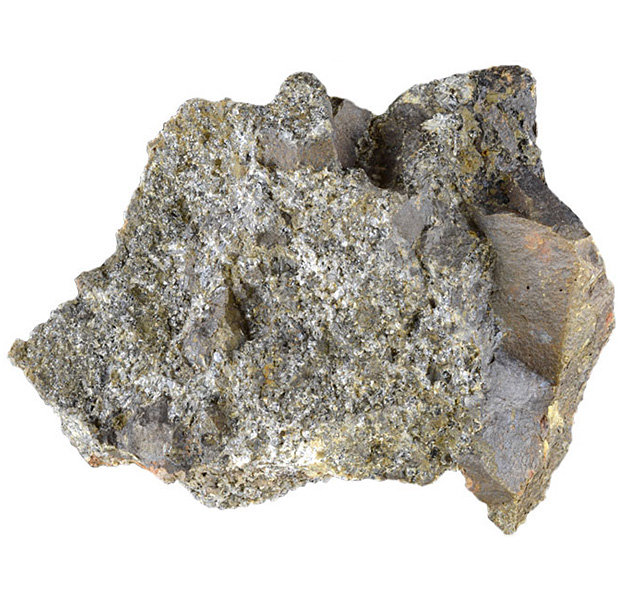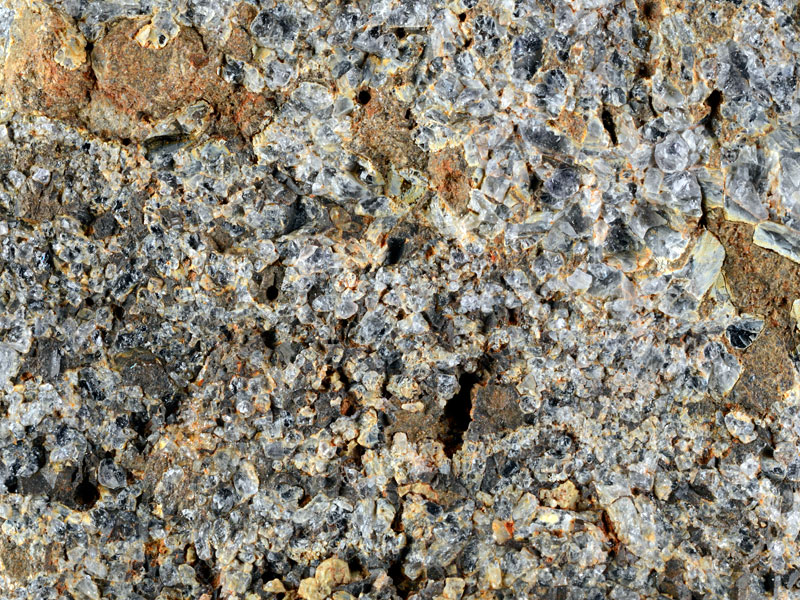
Fact sheet
This sample is a xenolith from the upper part of a sill sheet in the Loch Scridain Sill Complex on the Isle of Mull, Scotland. The Scridian Complex is intruded into Moine (Neoproterozoic) crystalline basement rocks beneath the Mull central volcano. It consists of a series of high-level, inclined, xenolithic sheets, ranging in composition from basalt, through andesite and dacite, to rhyolite. This sample is an unusual composition xenolith in a basaltic andesite sill.
In thin section the xenolith is dominated by large cordierite crystals that appear to have back reacted with the liquid magma. The cordierite is relatively inclusion-free although brown-stained adjacent to the liquid, and exhibits characteristic strong polysynthetic twinning. The basaltic andesite is fine-grained and appears to have invaded the xenolith while liquid. Away from the xenolith the plagioclase crystals are randomly oriented, but between the cordierites the crystallisation appears to vary, often forming radiating bundles.
The United Kingdom Virtual Microscope (UKVM) collection consists of igneous, sedimentary and metamorphic rocks from around the UK.
It is intended as a teaching resource, helping to tell the story of the common rock types and how they form, and reflecting the history of the UK at the margins of the continent of Europe. The collection is a series of teaching sets, for example igneous rocks from the North Atlantic Igneous Province and SW England; high-temperature metamorphic rocks from Scotland and low-temperature metamorphic rocks from Wales; and sedimentary rocks, including English limestones and sandstones.






